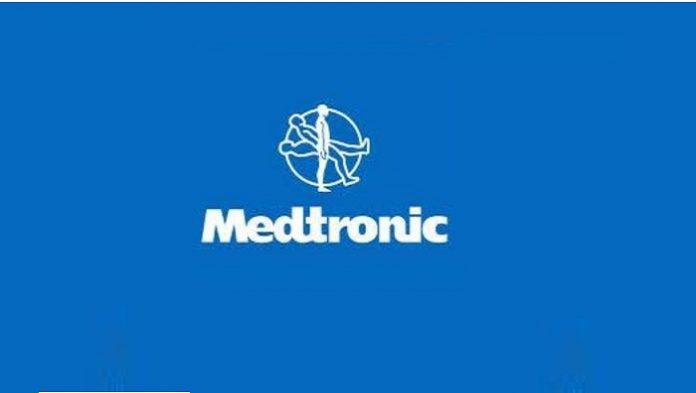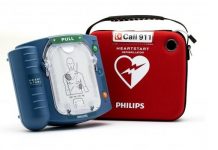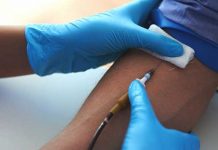Medtronic plc announced financial results for its third quarter of fiscal year 2018, which ended January 26, 2018.
The company reported third quarter worldwide revenue of $7.369 billion, an increase of 1 percent as reported, or 7 percent on a comparable, constant currency basis, which adjusts for the divestiture of its Patient Care, Deep Vein Thrombosis (Compression), and Nutritional Insufficiency businesses to Cardinal Health that occurred in the second quarter, and a $177 million positive impact from foreign currency.
As reported, third quarter GAAP net loss and loss per share (LPS) were $1.389 billion and $1.03, respectively. GAAP results included a $2.2 billion net charge primarily related to the U.S. transition tax charge as part of U.S. tax reform. As detailed in the financial schedules included through the link at the end of this release, third quarter non-GAAP net income and diluted EPS were $1.592 billion and $1.17, increases of 3 percent and 4 percent, respectively.
Adjusting for the divestiture and a negative 1 cent impact from foreign currency, third quarter non-GAAP diluted EPS increased 12 percent.
Third quarter U.S. revenue of $3.912 billion represented 53 percent of company revenue and decreased 5 percent as reported, or increased 6 percent on a comparable basis. Non-U.S.
developed market revenue of $2.355 billion represented 32 percent of company revenue and increased 7 percent as reported, or 5 percent on a comparable, constant currency basis. Emerging market revenue of $1.102 billion represented 15 percent of company revenue and increased 12 percent on both a reported and a comparable, constant currency basis.
“Our results reflect a solid quarter for Medtronic, and as we expected, a strong turnaround from the first half of our fiscal year,” said Omar Ishrak, Medtronic chairman and chief executive officer. “We continue to execute on our broad, sustainable growth strategy, driving therapy innovation and global market penetration, while delivering enterprise synergies to enable margin improvement.”
Cardiac and Vascular Group
The Cardiac and Vascular Group (CVG) includes the Cardiac Rhythm & Heart Failure (CRHF), Coronary & Structural Heart (CSH), and Aortic & Peripheral Vascular (APV) divisions. CVG worldwide third quarter revenue of $2.800 billion increased 10 percent, or 7 percent on a constant currency basis. CVG revenue performance was driven by strong, mid-teens growth in CSH and mid-single digit growth in CRHF and APV, all on a constant currency basis.
- CRHF third quarter revenue of $1.457 billion increased 6 percent, or 4 percent on a constant currency basis. Arrhythmia Management grew in the low-single digits on a constant currency basis, driven by high-teens constant currency growth in AF Solutions, as well as strong adoption of the Micra® Transcatheter Pacing System and TYRX® absorbable antibacterial envelope. Heart Failure grew in the mid-single digits on a constant currency basis, driven by strong double digit constant currency growth in Mechanical Circulatory Support from sales of the HVAD(TM) System, as well as continued solid demand for the company’s portfolio of quadripolar cardiac resynchronization therapy pacemakers (CRT-P).
- CSH third quarter revenue of $886 million increased 18 percent, or 14 percent on a constant currency basis, led by low-thirties constant currency growth in transcatheter aortic valves on the strength of the CoreValve® Evolut® PRO and U.S. intermediate risk indication. Coronary grew in the low-double digits on a constant currency basis, driven by strong demand for the company’s Resolute Onyx(TM) drug-eluting stent in the U.S. and Japan.
- APV third quarter revenue of $457 million increased 7 percent, or 5 percent on a constant currency basis. Aortic grew in the low-single digits on a constant currency basis, driven by the performance of the Valiant® Captivia® thoracic stent graft system. Peripheral grew in the mid-single digits on a constant currency basis, driven by double digit growth in both PTA balloons and drug-coated balloons. High-single digit growth in endoVenous was driven by a strong performance of the VenaSeal(TM) closure system.
Minimally Invasive Therapies Group
The Minimally Invasive Therapies Group (MITG) includes the Surgical Innovations (SI) and the Respiratory, Gastrointestinal & Renal (RGR) divisions. MITG worldwide third quarter revenue of $2.041 billion decreased 16 percent as reported, or increased 6 percent on a comparable, constant currency basis. MITG revenue performance was driven by high-single digit growth in SI and low-single digit growth in RGR, both on a comparable, constant currency basis.
- SI third quarter revenue of $1.384 billion increased 7 percent on a comparable, constant currency basis, driven by growth from new products in Advanced Energy and Advanced Stapling, including LigaSure(TM) vessel sealing instruments with nano-coating, endo stapling specialty reloads, and the Signia(TM) powered stapler.
- RGR third quarter revenue of $657 million increased 3 percent on a comparable, constant currency basis. GI and Hepatology grew in the low-double digits on a comparable, constant currency basis, with strength across the GI therapeutics, diagnostics, and ablation product lines. Respiratory and Patient Monitoring grew in the low-single digits on a comparable, constant currency basis, with strength in Nellcor(TM) pulse oximetry sensors given the strong incidence of influenza in the U.S.
Restorative Therapies Group
The Restorative Therapies Group (RTG) includes the Spine, Brain Therapies, Specialty Therapies, and Pain Therapies divisions. RTG worldwide third quarter revenue of $1.944 billion increased 7 percent, or 5 percent on a constant currency basis. Group results were driven by low-double digit growth in Brain Therapies, high-single digit growth in Pain Therapies, and mid-single digit growth in Specialty Therapies, offsetting flat results in Spine, all on a constant currency basis.
- Spine third quarter revenue of $661 million increased 1 percent, or was flat on a constant currency basis. Mid-single digit constant currency growth in bone morphogenetic protein (BMP) partially offset low-single digit declines in Core Spine, which were consistent with the Core Spine market.
- Brain Therapies third quarter revenue of $585 million increased 13 percent, or 10 percent on a constant currency basis. Neurovascular grew in the high-teens on a constant currency basis, with strength across its stroke product portfolio. Neurosurgery grew in the low-double digits on a constant currency basis, led by strong sales of the StealthStation® S8 surgical navigation system and O-arm®2 surgical imaging system.
- Specialty Therapies third quarter revenue of $398 million increased 8 percent, or 6 percent on a constant currency basis. High-single digit growth in Pelvic Health and ENT was partially offset by low-single digit declines in Transformative Solutions, all on a constant currency basis.
- Pain Therapies third quarter revenue of $300 million increased 10 percent, or 8 percent on a constant currency basis. The division returned to growth on the strength of the recently launched Intellis(TM) platform for spinal cord stimulation, as well as growth in drug pumps.
Diabetes Group
The Diabetes Group includes the Intensive Insulin Management (IIM), Diabetes Service & Solutions (DSS), and Non-Intensive Diabetes Therapies (NDT) divisions. Diabetes Group worldwide third quarter revenue of $584 million increased 17 percent, or 13 percent on a constant currency basis. The group is experiencing strong global demand for its new sensor-augmented insulin pump systems, and has made great progress on its ability to meet this demand, as evidenced by the improved sequential revenue growth.
- IIM third quarter revenue grew in the high-teens on a constant currency basis, driven by the U.S. launch of the MiniMed® 670G hybrid closed loop insulin pump system with the Guardian® sensor 3 CGM. In international markets, IIM delivered low-twenties constant currency growth on the continued strength of the MiniMed® 640G system.
- DSS third quarter revenue grew in the mid-single digits on a constant currency basis, with growth in consumables benefitting from customer base growth and improved patient utilization.
NDT third quarter revenue declined in the mid-single digits on a constant currency basis, given the commercial focus on the MiniMed® 670G launch and competitive pressures.
Guidance
Medtronic today reiterated its fiscal year 2018 revenue and non-GAAP guidance. The company’s guidance is given on a comparable, constant currency basis, which accounts for the divestiture of certain businesses from its prior period Patient Monitoring & Recovery division by removing the financial impact of these businesses from the second, third, and fourth quarters of fiscal year 2017, as well as removing the impact of foreign currency.
In fiscal year 2018, the company continues to expect comparable, constant currency revenue growth to be in the range of 4 to 5 percent. While the impact of foreign currency remains fluid, if current exchange rates remain similar for the remainder of the fiscal year, the company’s revenue would be positively affected by approximately $480 million to $500 million for the fiscal year, including an approximate $300 to $320 million positive impact in the fourth fiscal quarter.
In fiscal year 2018, the company continues to expect diluted non-GAAP EPS growth to be in the range of 9 to 10 percent on a comparable, constant currency basis from the prior year comparable EPS of $4.37. Assuming current exchange rates remain similar for the rest of the year, the foreign exchange impact on the company’s non-GAAP EPS would be approximately negative 4 cents for the fiscal year, including an approximate 2 cent negative impact in the fourth fiscal quarter.
“Looking ahead, we are confident in our ability to deliver mid-single digit constant currency revenue growth and strong constant currency EPS leverage, this fiscal year and beyond,” said Ishrak. “We remain keenly focused on executing to deliver dependable results as we continue to leverage our global diversification and scale to fulfill our Mission of alleviating pain, restoring health, and extending life for millions of people around the world.”























